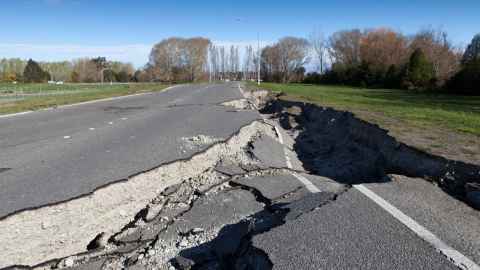What a difference a decade makes in earthquake engineering
22 August 2019
It’s a brutal way to learn but if there is any good to come out of the earthquakes that devastated parts of New Zealand over the last decade, a lot more is now known about the ground beneath our feet.

A lot more is also known about the impact on our buildings and other infrastructure when our ground shakes, and how to build better for these shaky isles.
Dr Liam Wotherspoon, associate professor in civil and environmental engineering will talk about what the last decade has revealed at Raising the Bar this month, an event at which 20 top academics from across the University will describe their research at 10 inner city bars on one night.
He and fellow researchers at QuakeCoRE, a national multi-institutional research centre, have learned a lot since the Canterbury earthquake sequence during 2010 and 2011, and the magnitude 7.8 Kaikōura earthquake in 2016.
They have a better understanding of the different soil types in different parts of the country, for instance, and how that affects the intensity of earthquake shaking.
“A lot of areas around New Zealand are big sedimentary basins filled with layers of soil,” says Dr Wotherspoon. “Ten years ago, we didn’t have a clear understanding of how those basins and soils respond in seismic events, but observations from earthquakes and extensive investigations have allowed us to build that knowledge.”
We now know more about how the layers of soil can amplify the intensity of an earthquake and how that could affect the seismic performance of buildings.
They have a better understanding of how the stiffness and thickness of soil layers affects the characteristics and intensity of the shaking at the ground surface.
“So we now know more about how the layers of soil can amplify the intensity of an earthquake and how that could affect the seismic performance of buildings,” he says.
“A building on rock is going to experience ground shaking in a way that is quite different from a building built on deep soil.”
Dr Wotherspoon will also talk about what the 2016 Kaikōura earthquake revealed about the capital over 60km away, how the characteristics of the soils of Wellington amplify the intensity of earthquake shaking and how this was able to damage relatively modern buildings.
Earthquake engineering is an evolving field, he says, but the more earthquake engineers learn, the better equipped we are to build more resilient cities.
All around the world, seismic design has been shaped by New Zealand research and as a result of research done in the late 1970s and 1980s the focus has been on ensuring buildings are able to dissipate energy to keep people inside the building safe.
There is now growing consensus that designing for earthquakes needs to be adjusted not only to ensure our safety in an earthquake, but to ensure our homes are livable and that businesses can continue to function should one occur.
The research is part of a growing international understanding, he says. “There has been investment in significant amounts of research off the back of those earthquakes, and much of that data has been made internationally available. That has driven world-wide advances in research, with New Zealand is leading the way. But there is still years of research that needs to be done.”
Media contact
Margo White I Media adviser
DDI: 09 923 5504
Mob: 021 926 408
Email: margo.white@auckland.ac.nz